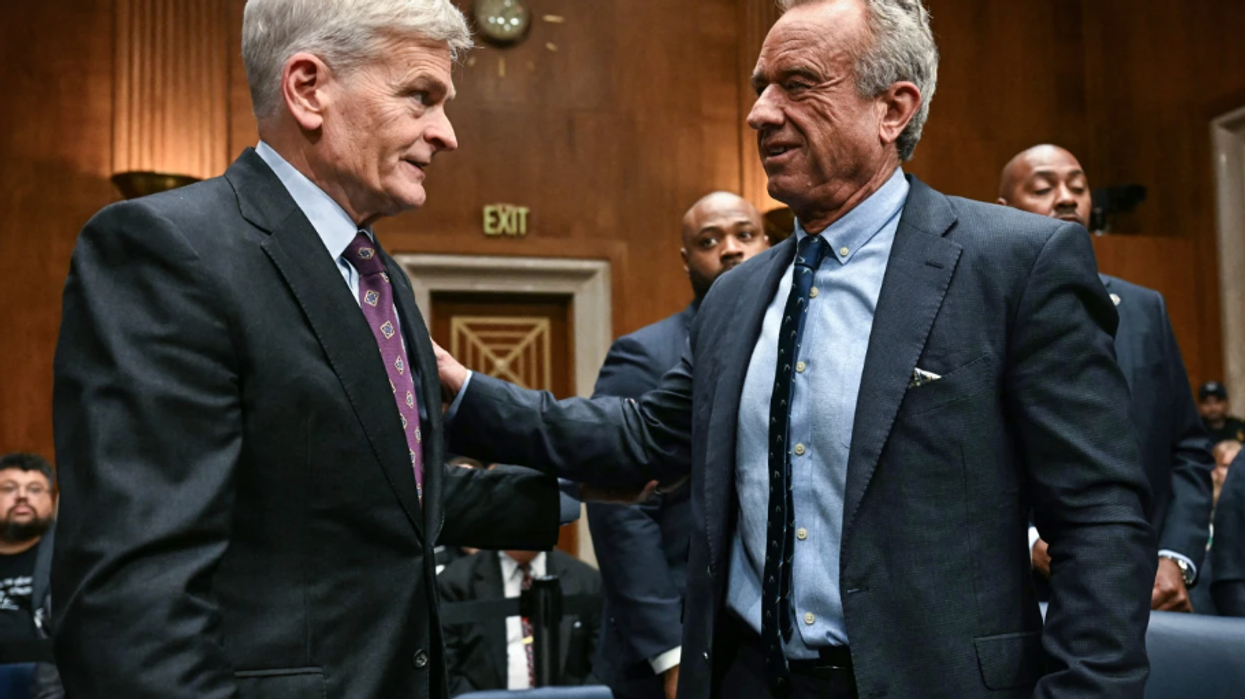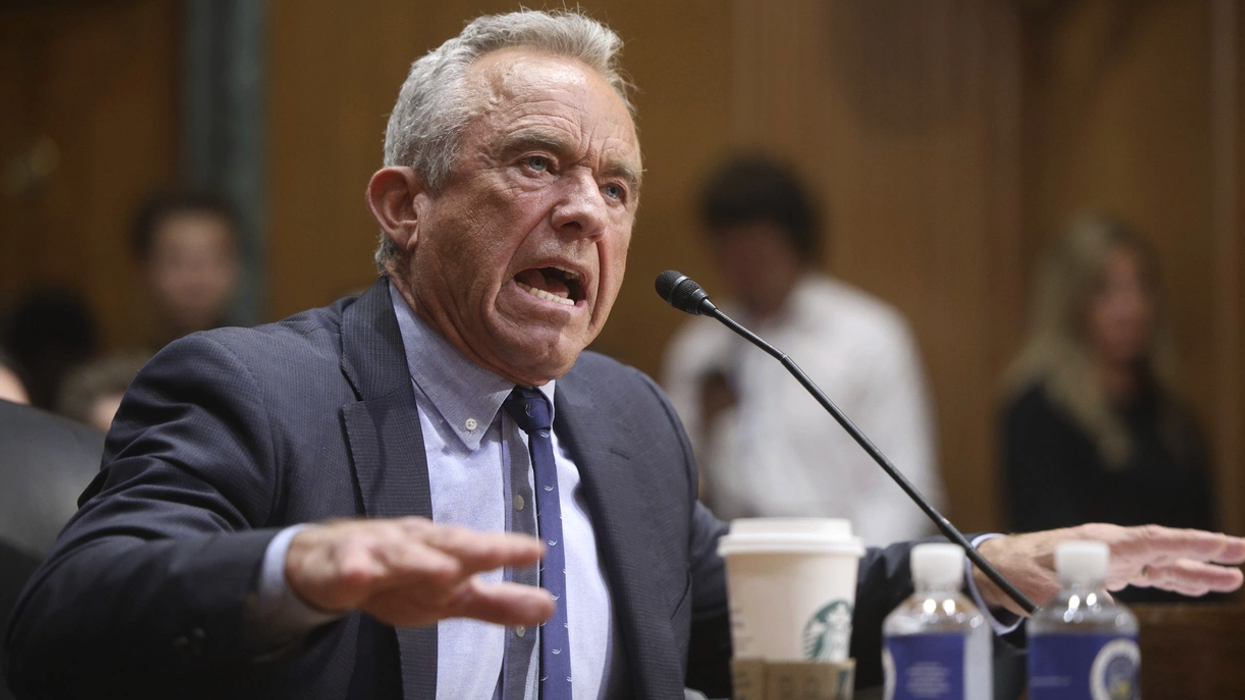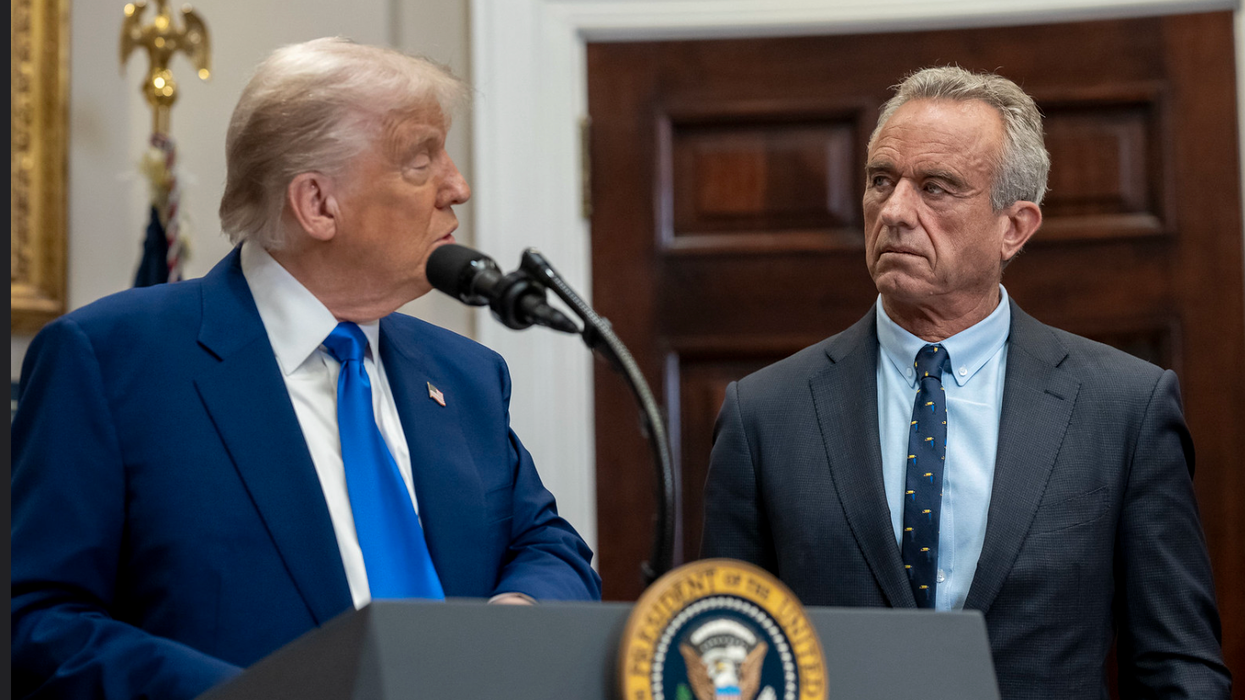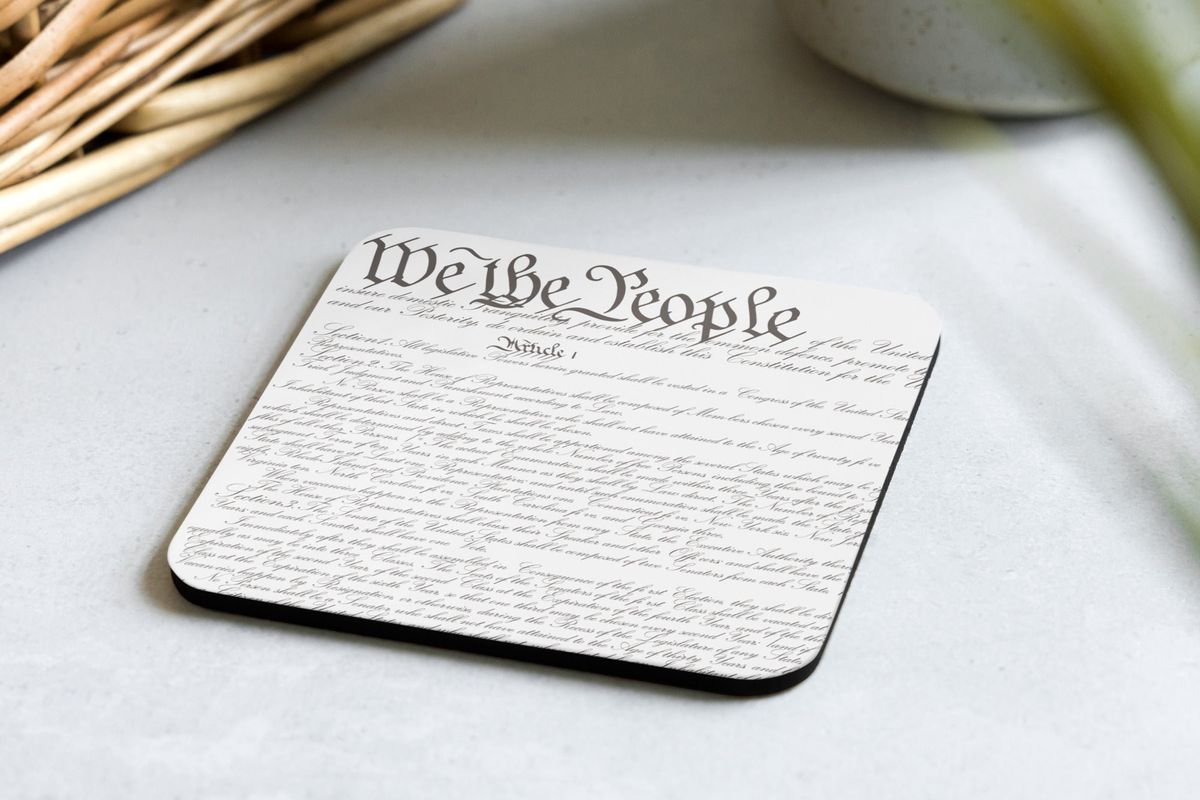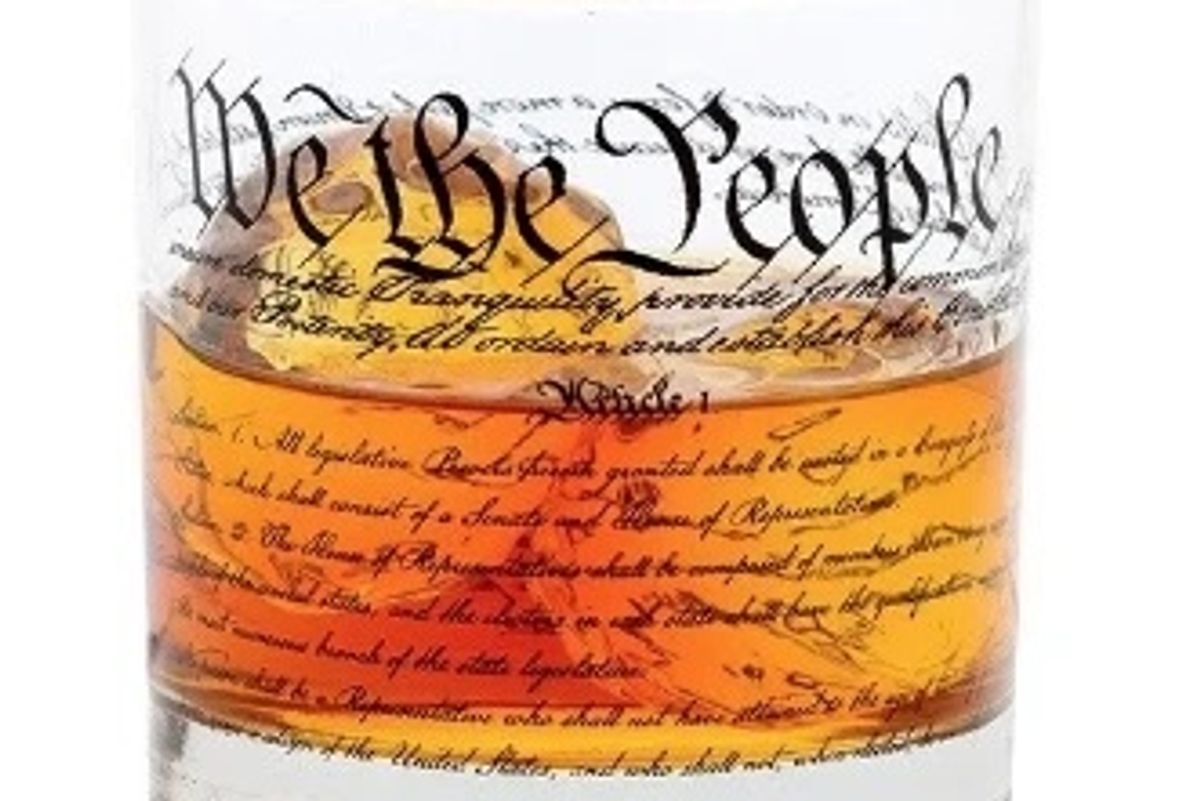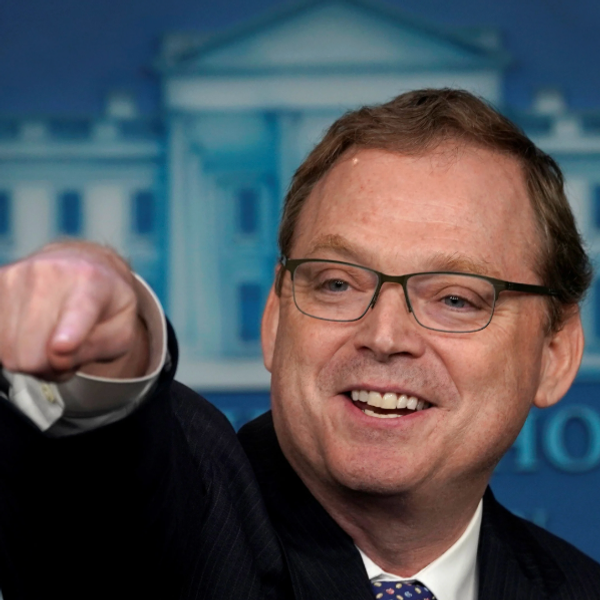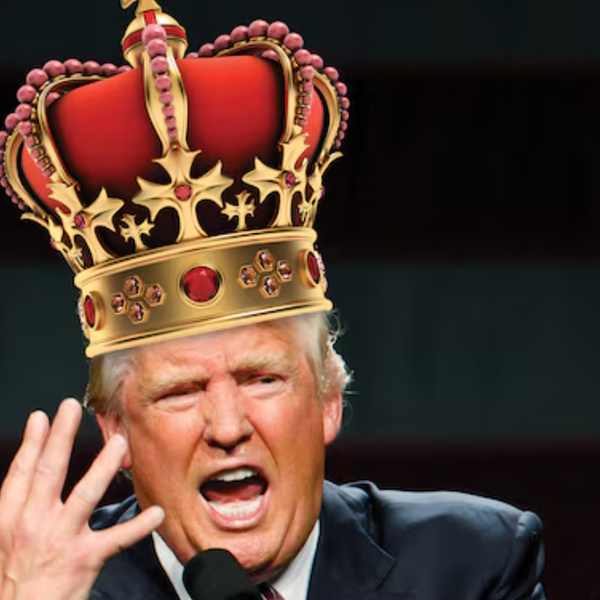If you thought that Donald Trump and his Republican enablers were finished with with their attacks on abortion now that 18 Red states have extreme abortion bans with no exceptions for rape or incest, you would be wrong.
Anti-abortion organizations which funnel big bucks to Republican campaigns are furious that strict abortion bans have not stopped American women from making their own decisions about if and when they want children.
That’s why Robert F. Kennedy Jr., Trump’s health and human services secretary, has taken his first shot in what will be a war against the pill, mifepristone, which is an essential drug in the safe and effective two-pill medication abortion regimen.
He announced that he would be doing a “complete review” of the “safety”of mifepristone during a Senate committee hearing in May.
He is basing his review, which he ordered his FDA Commissioner Marty Makary to undertake after publication of a recenr study by the Ethics & Public Policy Center ( the EPPC), which claimed that almost ‘11% of the patients who took mifepristone ‘ experienced a severe adverse event.’
That’s way out of wack with dozens of other studies which show that serious complications from mifepristone occur just 1% of the time and in general, a pregnancy ending in any abortion is 14 times less likely to result in a mother dying, than in actual childbirth.
Neverthess, the politically -motivated Kennedy, who wants to stay in line with Trump’s anti-abortion goals, told the Senate committee that he found the EPPC study, called ‘The Abortion Pill Harms Women’, “alarming.”
Furious and frustrated women’s reproductive health experts have strenuously disputed the results of that study which Kennedy now using for the basis of his review of mifepristone.
They have condemned this study as “flawed”, the data “distorted”, “junk science”and have called out the source of the data used in the study as not “transparent.”
It’s important to know that the organization which produced the report, the Ethics & Public Policy Center ( EPPC) isn’t any disinterested, non partisan player in the anti-abortion battles.
It’s a right-wing think tank which lists its top priority on its website as: “Pushing back against the extreme progressive agenda while building a consensus for conservatives.”
And guess what, one of its board members is the infamous reactionary and anti abortion activist Leonard Leo, who is co-chairman of the Federalist Society’s board of directors.
The Federalist Society, an exceedingly conservative legal group, just happened to have recommended Neil Gorsuch, Brett Kavanaugh, and Amy Coney Barrett to Donald Trump as potential justices for the Supreme Court.
Those three Trump nominees were confirmed to the Supreme Court along with Federalist Society members Clarence Thomas and Samuel Alito and they overturned Roe v Wade along with Chief Justice John Roberts in June 2022.
Mission accomplished by the Federalist Society.
So this ‘study’ was produced by an organization with ties to Leonard Leo, who has led a decades- long campaign to roll back women’s reproductive rights and to shut down Planned Parenthood.
Based on the EPPC study, just recently this September, Kennedy and Makary wrote a letter to 22 Republican state attorneys general announcing that the FDA is conducting its own review of mifepristone claiming that the Trump administration ”will ensure that women’s health is properly protected.”
Proof that Trump and Kennedy don't give a rat's ass about women's health
However this is total B.S. The Trump administration, including HHS Secretary Kennedy, don’t really give a rat’s ass about the health of American women.
This is the same administration that deliberately decided by passing Trump’s Big ‘Ugly’ Bill, not to ensure that women’s health is being properly protected when it comes to childbirth.
He and the Congressional Republicans massively cut funding for Medicaid which covers the cost of childbirth for 41 percent of women in the U.S.. Yes, that’s what’s in the so-called ‘Big Beautiful Bill.’
Now 41 percent of the women in this country will be lucky to be admitted to a hospital’s emergency department to give birth but will then be handed a bill for thousands of dollars. If they can’t afford that, they will be giving birth in hospital parking lots all over America.
So yah, Kennedy and his ilk are not investigating mifepristone because they claim that they want to ‘protect’ all of America’s delicate womenfolk.
On top of this, Trump’s administration is putting the reproductive health of 24 million American women who rely on Medicaid for their birth control, cancer screening, and vaccinations in jeopardy, according to a ‘Women’s Health and Reproductive Care’ study by the Commonwealth Fund in 2024.
American obstetricians and gynecologists now fear that Kennedy's “review” could be the first step in a plan to withdraw mifepristone from use in the U.S.
After all, Project 2025 calls for eliminating all access to mifepristone as a key step in its overall plan to obliterate access to all abortions in the U.S. And Donald Trump has been quickly implementing a multitude of Project 2025’s proposals.
The American College of Obstetricians ( ACOG ) fired back at Kennedy’s review of ‘mifepristone,’ issuing a statement that “mifepristone is safe, effective and an integral part of the medical care that our members provide to their patients.”
“We urge availability of mifepristone that is equitable, is free from needlessly burdensome restrictions and that reflects the full body of reputable, peer-reviewed, and scientifically valid medical literature demonstrating that mifepristone is an incredibly safe medication.”
Mifepristone was approved in the United States for use in abortions in 2000 and studies have shown it to be safer than penicillin and Viagra.
The doctors that I interviewed had even stronger words for Kennedy than ACOG.
.“This ( the study) is meant to take things away from us purely for political reasons,” charged Dr. Kristin Lyerly, a Wisconsin obstetrician-gynecologist, who practices across the state border in rural Minnesota. “Mifepristone is incredibly safe, incredibly well studied. We have years and years of data from the US and and beyond.”
“There’s even more data from outside the United States where they don’t have this political interference. Mifepristone is safe, it’s effective. It is necessary and RFK Jr has no business re-examining this data just to take away effective treatment from my patients.”
Dr. Alhambra Frarey, the chief medical officer of Planned Parenthood Southeastern Pennsylvania, asserts that it is “absolutely clear that RFK Jr. is not interested in promoting the health and safety of Americans.”
“Instead he is trying to promote the anti abortion agenda to continue to threaten access to what is in fact life saving, safe and effective medications for abortion.”
Doctors fire back at plans to ban abortion and the most effective contraceptives
Dr. Lou Rubino agrees.”It’s not out of the realm of possibility that he will do what he does with other things, which is ignore the science,” says Rubino, the medical director of the Meadow Reproductive Health and Wellness clinic in Virginia.
“That seems to be something this administration does repeatedly”, she adds about Kennedy and Trump, who just asserted without any scientific evidence that autism is caused by acetaminophen, the active ingredient in Tylenol.
Dr. Lyerly is disgusted and contends that Kennedy “is not a scientist and is entirely political." She says, “ it’s hard to watch someone with such an important role in this country, who is in charge of some of the most vulnerable people in this country, have a complete lack of respect for the things they hold dear.”
“Their healthcare, their lives and their families. And here he is as the nation’s highest health officer.”
Kennedy and his FDA Commissioner Marty Makary, who has a history of spouting abortion disinformation on Fox News, are no doubt under intense pressure by anti-abortion groups that are on a crusade to roll back access to abortion pills.
In 2024, two years after Roe v Wade was overturned, the number of abortions in the U.S. actually increased to 1.14 million up from 1.05 million in 2023, despite the extreme state bans. Included in that were the number of pregnant women who crossed state lines for an abortion -- 155,000 in 2024, double the number since 2020.
Not only that, abortions using the FDA approved two-pill regimen to terminate pregnancies, have increased in states that have banned abortions.
In fact, there are now three times as many medication abortions using the two drugs, mifepristone and misoprostol, in states that have tried to prevent women from having abortions by enacting strict bans, according to a study by the University of Texas at Austin.
Sixty- three per cent of the abortions in the country are now done by women in the privacy of their own homes using the two-pill regimen. That’s up from 53 percent in 2020.
That’s why infuriated Republican legislators in Texas just passed the first law - HB7 - in the country, banning abortion pills from even entering their state.
They had a “temper tantrum” because they have not been able to stop Texas women from using abortion pills which they have been able to access through doctors in abortion-legal states, says Nimra Chowdhry, a senior state legislative counsel with the Center For Reproductive rights.
Now South Caroline Republicans are also trying to push through a cruel anti abortion bill -- Senate Bill 323 -- which would make it illegal to possess abortion pills in that state.
Not only that, Senate Bill 323, if passed, would also be the most extreme ban in the country and the first to criminally prosecute women who have an abortion as committing the felony of murder.
Women could be executed for having an illegal abortion since South Carolina law carries the death penalty for murder. If they escape the death sentence, they would still face 30 years in prison for that crime.
So much for Republicans desperately trying to ‘protect’ women. They are itching to kill them.
They are also itching to get them pregnant with lots of unwanted pregnancies. The proposed South Carolina law would also ban most forms of contraception and in vitro fertilization (IVF).
If RFK Jr decides after his “safety review to make abortion pills difficult or impossible to access, doctors Rubino, Frarey and Lyerly, say that they and other OBGYNs will be prevented from providing necessary reproductive healthcare to American women.
Women living in states with abortion bans will be forced to travel hundreds of miles for a surgical abortion at a clinic in a state where abortion is still legal.
Miscarriages will become deadly if mifepristone is banned
However, many pregnant women won’t be able to afford to travel to a clinic hundreds of miles away, something which can cost thousands of dollars, points out Dr Rubino. They may be forced to give birth to a baby that they can’t afford to care for or be mentally prepared to raise.
“We know that people who want to access an abortion and are not able to, consistently have worse outcomes over the rest of their lives,” says Dr. Rubino. “Worse outcomes in terms of their health - mental and physical - and these people over time will do worse economically.”
“We know that these people will have fewer opportunities over the rest of their lives.”
Restricting access to mifepristone won’t just harm women who need abortions, it will also make far more miscarriages dangerous and painful, points out Dr.Frarey.
That’s because doctors prescribe the same two pill regimen used in abortions - mifepristone and misoprostol - to help women safely manage miscarriages.
Without mifepristone and just using misoprostol, it means more bleeding and cramping for miscarrying women, she explains . It also means there’s a greater potential for tissue from the pregnancy being retained in the uterus, instead of expelled.
That puts women at much greater risk of developing an infection inside their uteruses, even a life-threatening case of sepsis.
Three women have already been documented to have died in Texas hospitals when they retained pregnancy tissue in their uteruses and developed deadly sepsis infections or they hemorrhaged and hospitals waited far too long to treat them.
Have I made my case, that if RFK Jr bans mifepristone, it’s absolutely has zero to do with ‘protecting’ the health of women? That’s the very least of their concerns.
It makes no sense to ban mifepristone, which is so safe and effective, points out Dr. Lyerly. “The data tells us that the chance of a serious complication is much less than one percent and that’s been my personal experience as well with patients.”
“If we can’t provide the most effective treatment for our patients ( who need abortions or miscarriage care ) that’s frankly, just a crime”, she asserts.
Kennedy, Donald Trump, and Republican lawmakers have no business interfering in women’s reproductive healthcare, agrees Dr. Frarey.
“Reproductive healthcare needs to be determined by patients and their doctors,” she insists. ”Patients don’t need politicians presenting more barriers and more legislation on how to manage something that should be bread and butter OBGYN miscarriage management.”
“You can’t legislate healthcare. It is more nuanced and complicated than that.This is why people die when you place bans and restrictions around lifesaving care.”
Yes, that is true , but sadly it won’t stop Trump or RFK Jr from doing the work demanded by their billionaire anti abortion donors and the powerful anti abortion organizations, who also fill Republican campaign coffers!
Only you can stop them by voting all Republicans out of office at your local, county, state and also federal elections, because they are uniformly anti-abortion and now anti-birth control, on top of it all.
If your live in Virginia or New Jersey or in New York City, make sure you vote early or get out and vote on Election Day, November 4, for the Democratic candidates running for office. Your uterus will thank you!
Bonnie Fuller is the former CEO and editor-in-chief of HollywoodLife.com and former editor-in-chief of Glamour, Cosmopolitan, Marie Claire, and USWeekly.
Reprinted with permission from Your Body, Your Choice Substack. Please consider subscribing.

